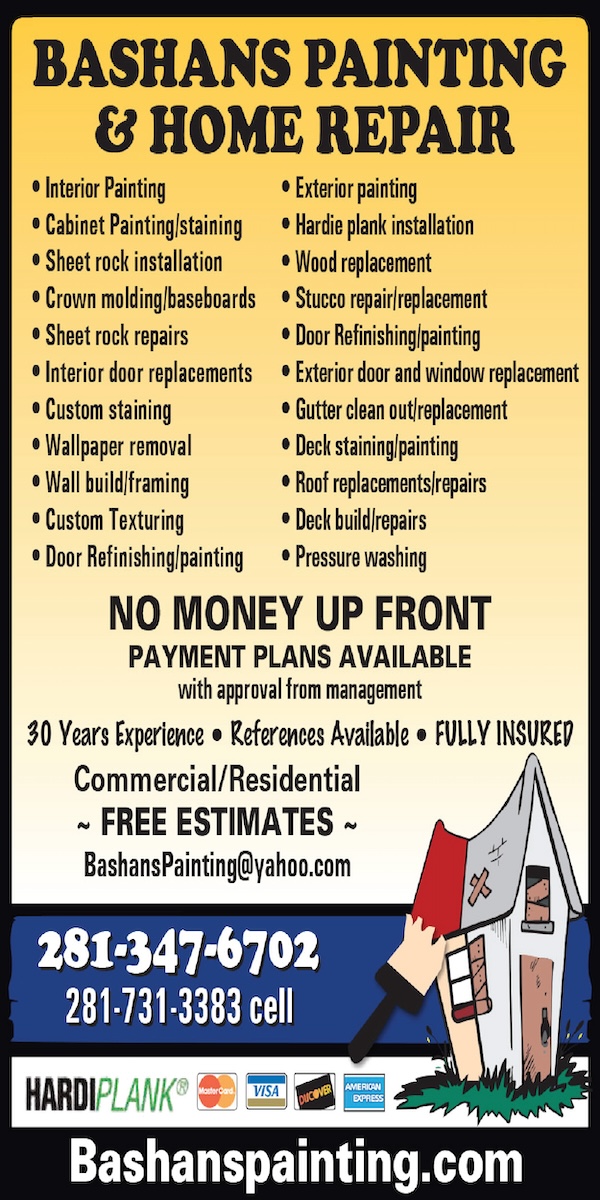
Aerial Spraying Scheduled in Portions of West and Northwest Houston to Control Mosquitoes that Spread West Nile Virus
Harris County Public Health’s (HCPH) Mosquito Control and Vector Control Division (MVCD) has scheduled an aerial spray operation for portions of west and northwest Harris County to combat mosquito-borne disease. The aerial application will occur Saturday evening, August 10. The plan is to spray approximately 81,640 acres by air, weather permitting, and will take two nights to complete. See the map below for the planned spray areas.
The aerial spray operation is being conducted in response to recent findings indicating that West Nile virus (WNV) activity has increased in Harris County, due to an increase in mosquitoes after Hurricane Beryl floods. To date, WNV has been reported in 23 humans (not including the City of Houston), 615 positive mosquito samples, and 27 positive dead birds in Harris County.
“Harris County is experiencing an increase of West Nile virus infection in mosquitoes, as well as infections in humans. This situation has prompted the need to supplement the ongoing countywide Ultra Low Volume (ULV) ground treatment with aerial treatment in the designated areas to better protect the health of our community members.” said Dr. Maximea (Max) Vigilant, MVCD Director.
Is aerial spraying alone the best way to control mosquitoes?
Aerial spraying is only one part of the solution for controlling mosquitoes, but it is the best method to rapidly reduce the number of adult mosquitoes that potentially carry disease in a large area. Aerial spraying can be used as part of an integrated mosquito control program to reduce the number of mosquitoes responsible for infecting people with viruses like West Nile Virus, Zika, Dengue, or Chikungunya. An integrated mosquito control program also includes:
- Source Reduction: Empty items that can hold water like buckets, planters, and tires.
- Prevention: Make sure screens are in good condition and fit tightly on doors and windows.
- Community Education and Outreach: Related to preventing mosquitoes. We encourage community members to wear EPA-registered insect repellents, long-sleeved shirts, and long pants. The community can also follow the recommended 3T’s (tip, toss, take action) to reduce mosquito activity.
Aerial Spraying and Insecticides
EPA-registered insecticides are used for aerial spraying. They have been studied for their effectiveness and safety when used according to label instructions. Aerial spraying, using Naled/Dibrom and other insecticides, has been used in many areas of the United States.
What happens to Naled/Dibrom once it is sprayed?
Naled/Dibrom starts to break down immediately on surfaces, in water, and in sunlight. Naled degrades extremely rapidly on surfaces, and residue declines to a level that does not pose any potential health concerns within 5 minutes to 3 hours after application.
What about Bti? Can it be applied through aerial spraying?
No. Bti, or Bacillus thuringiensis israelensis, is a bacterium that can kill mosquito larvae. It is often applied using methods other than aerial spraying. For example, it can be applied using truck-mounted spraying or in the form of dunks or briquettes that can be placed in standing water areas, such as fountains, ornamental ponds, septic tanks, and unchlorinated pools.
Aerial Spraying and Human Health
Aerial spraying can help reduce the chances of getting a mosquito-borne disease. A small amount of insecticide is sprayed over an area, about 1 ounce (two tablespoons) per acre. Droplets float in the air and kill adult mosquitoes on contact. This small amount does not pose a health risk to people or pets in the area that is sprayed. The Environmental Protection Agency (EPA) has classified Naled as Group E “Evidence of Non-carcinogenicity for Humans,” meaning that there is no evidence that it causes cancer in people.
When aerial spraying is done correctly, it does not cause asthma attacks. Out of an abundance of caution, people should stay inside their homes when spraying is taking place. Aerial spraying is conducted by licensed professionals.
Animals/Fish/Birds: When aerial spraying is done correctly, it does not harm animals or birds. It will not harm fish or animals that live in the water. People do not need to cover fish ponds when spraying takes place. During aerial spraying, it is better if ponds are not covered.
Bees: Aerial spraying can be done in ways that minimize risk to bees. Spraying Naled can kill bees outside of their hives at the time of spraying; therefore, spraying is limited to dawn or dusk when bees are inside their hives. Because Naled breaks down quickly, it does not pose a risk to the honeybee populations. For additional protection, beekeepers can reduce potential exposure to bee colonies by covering colonies and preventing bees from exiting during designated treatment periods or, if possible, relocating colonies to an untreated site.
Aerial Spraying and the Environment
When aerial spraying is done correctly, it does not pollute water or will not contaminate soil. Spraying does not cause harm to the environment or local ecosystem, even if spraying happens more than once.
Resources on Insecticides and Health
- The U.S. Environmental Protection Agency oversees the registration of chemicals including insecticides. To learn more, click here.
- The National Pesticide Information Center (NPIC) provides information online or through a toll-free number at 1-800-858-7378.
- Aerial Spraying - Frequently Asked Questions, click here.
Source: HCPH







